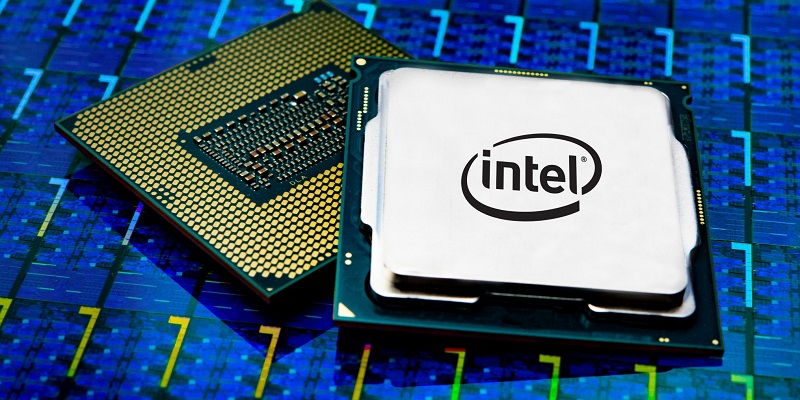In the fast-paced world of technology, Intel is gearing up for its next-generation Lunar Lake CPUs, which promise to deliver groundbreaking advancements in artificial intelligence (AI) capabilities. These CPUs will feature a brand new VPU (Versatile Processing Unit) engine, designed specifically to enhance AI/ML (Machine Learning) performance. As Intel takes VPUs more seriously due to their increasing importance in AI applications, initial support for this cutting-edge technology has surfaced in the latest Linux kernel release.
Intel’s Next-Gen Lunar Lake CPUs with New VPU Engine
The upcoming Lunar Lake CPUs from Intel are set to incorporate the highly anticipated VPU4, a dedicated processing unit specifically designed to accelerate AI and ML workloads. The VPU4 engine is expected to significantly enhance the performance and efficiency of AI computations, opening up new possibilities for applications such as image recognition, natural language processing, and autonomous driving. The initial Linux kernel patches for VPU4 enablement appeared in Linux 6.3, shedding light on Intel’s plans to integrate this AI engine into their next-generation CPUs.
Intel’s Increased Focus on VPUs for AI Applications
As AI continues to shape various industries, Intel recognizes the growing significance of VPUs in accelerating AI workloads. With the VPU4 engine, Intel aims to deliver superior AI performance and efficiency, allowing for faster and more accurate AI computations. By dedicating a specialized processing unit to handle AI workloads, Intel demonstrates its commitment to meeting the demands of AI-centric applications in a rapidly evolving technological landscape.
AMD’s Inception Mitigations and Impact on CPU Performance
While Intel is pushing the boundaries of AI with their Lunar Lake CPUs, their competitor AMD faces a different challenge. AMD’s implementation of Inception Mitigations, designed to address security vulnerabilities, has the potential to lower CPU performance by up to 54%. This trade-off between security and performance highlights the delicate balance that AMD must navigate to ensure a secure computing environment without sacrificing computational power.
Expectations for further development of VPUs in upcoming kernel cycles
Tech enthusiasts and industry experts anticipate that the development of VPUs will continue to gain momentum in subsequent Linux kernel cycles. Phoronix, a leading technology website, shares these expectations and predicts that additional advancements and optimizations in VPU technology will be unveiled in the near future. This signifies a continued commitment from both hardware manufacturers and the open-source community to enhance the capabilities of VPUs for AI and ML workloads.
Lunar Lake CPUs Architecture and Main Driving Components
Under the hood, Lunar Lake CPUs will utilize Intel’s Lion Cove P-Cores and Skymont E-Cores as the primary architectural drivers. These powerful cores, coupled with the VPU4 engine, lay the foundation for Lunar Lake CPUs to unleash impressive AI capabilities. By synergizing these components, Intel aims to deliver a comprehensive solution that meets the diverse computational demands of modern AI applications.
Intel’s Cautious Approach to Providing Support for Future Releases
It is noteworthy that Intel is already providing support for a release that is projected to be two years ahead. This cautious approach ensures that the necessary infrastructure, such as Linux kernel support, is in place when Lunar Lake CPUs hit the market. By proactively enabling the necessary software components in advance, Intel aims to deliver a seamless user experience and drive widespread adoption of their revolutionary CPUs.
Comparison of Intel and AMD’s Investment in Future Architectures
Intel’s innovative approach to next-gen launches, as evident with the inclusion of VPU4 technology, highlights their commitment to staying at the forefront of AI/ML advancements. Simultaneously, AMD is also investing in future architectures, albeit with a different focus. AMD’s recent release of Freesync Panel Replay and initial patches for the upcoming RDNA4 architecture provide a glimpse into their expansion plans within the Linux platform. This signifies AMD’s dedication to catering to the Linux user base and exploring new avenues for growth.
As Intel prepares to unleash the power of Lunar Lake CPUs with their new VPU engine, the AI landscape is on the verge of an exciting transformation. By incorporating specialized VPUs and enabling Linux kernel support, Intel is set to elevate AI performance to new heights. Meanwhile, AMD’s investment in future architectures demonstrates their commitment to meeting the evolving demands of the Linux community. With both companies making significant strides, the technological advancements in AI and ML are poised to revolutionize various sectors and open up endless possibilities.

